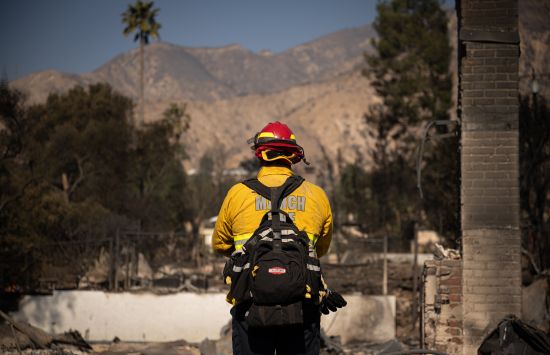
Credit: Mark Stone/University of Washington
Community data for future readiness
Since 1976, NSF has supported the Clearinghouse on Natural Hazards Applications, administered by the University of Colorado's Natural Hazards Center, which trains and funds researchers collecting time-sensitive data about natural disasters and their effects on society.
Together, the clearinghouse and center have produced dozens of reports highlighting key factors that speed up wildfire recovery. These insights, such as quickly reopening critical facilities (schools, hospitals) and building partnerships between local groups and larger regional or national organizations, help communities target their resources and reduce vulnerabilities to future wildfires.
Always be prepared
Where is wildfire risk highest? Once a fire starts, how quickly will it spread? How can communities effectively allocate firefighting resources? NSF has funded the development of tools to tackle these essential questions. These tools include:

Improving predictive power
In 2010, researchers at the NSF National Center for Atmospheric Research developed the Weather Research and Forecasting – Fire (WRF-Fire) model to improve wildfire preparedness and response.
These new forecasting models incorporate essential weather details, such as changes in winds that affect wildfire spread, to make wildfire predictions more accurate and reliable.

Fueling first responders
NSF started funding the development of UC San Diego's WIFIRE in 2013. The tool incorporates data from sensors, models, communication networks and satellite imagery to show the location and status of every active wildfire in the U.S., providing projections of where and how quickly each fire will spread.
Today, fire departments use WIFIRE to better target the deployment of fire trucks, planes and digging crews. WIFIRE has helped save countless lives, homes and businesses.

A wise use of resources
In 2019, NSF-funded researchers developed a machine learning algorithm that can predict the maximum size of a wildfire based on factors at the moment of ignition.
The model can also forecast scenarios where multiple fires break out simultaneously at unprecedented speed. This enables officials to make fast, informed decisions on allocating limited firefighting resources more efficiently.

Trailblazing partnerships
The Wildfire Interdisciplinary Research Center (WIRC), established in 2021 as an NSF Industry-University Cooperative Research Center, brings together academic and industry leaders to develop new resources for first responders, communities, companies and utilities.
Researchers at WIRC have already conducted research to understand fire behavior in steep terrain (one of the most challenging areas to study fires), uncovering critical insights that help firefighters anticipate rapid fire spread and better protect nearby communities from wildfire threats.
Rising to the challenge
Through America's Seed Fund, powered by NSF, the agency has supported the development of state-of-the-art firefighting technologies, including:

Putting out fire with fire
Prescribed burns, which remove excess fuel in fire-prone areas, are one of the most effective wildfire prevention tactics.
In 2020, NSF funded the Nebraska-based startup Drone Amplified to develop drones that allow firefighters to ignite, manage and monitor prescribed burns from a distance. These drones are used by agencies across the U.S. to manage fire more safely and affordably.

Engineering a better fire hose
In 2021, NSF funded HEN Nozzles Inc. to develop a new fire hose nozzle that improves a hose's coverage and reach. Compared to previous nozzles, the new one improves fire suppression rates threefold while reducing water use by two-thirds.
High-efficiency nozzles are used by fire departments throughout the U.S. and are distributed internationally, improving firefighting efficiency worldwide.
Shaping the future of wildfire mitigation
Through partnerships like the Fire Science Innovations through Research and Education program, NSF supports proactive approaches to generating new knowledge in wildland fire science, including how we study and manage fires while preserving lives and livelihoods.


